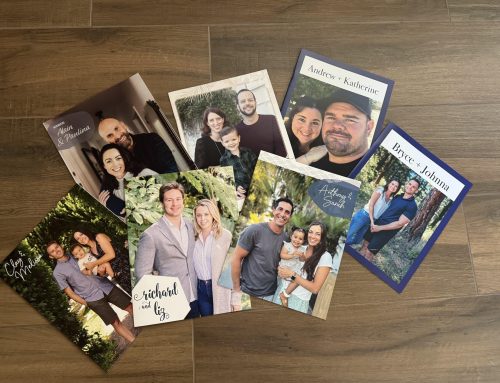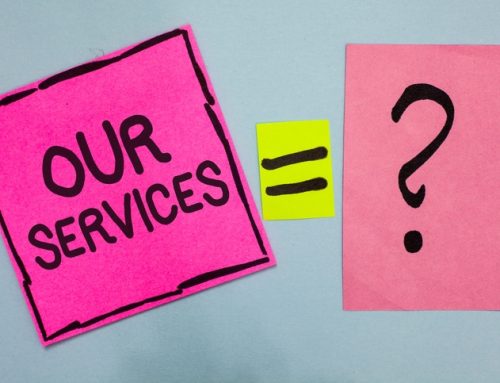
We often get contacted by prospective adoptive families just starting the adoption process, or families that started down the road to adopt, and have realized they were on the wrong track. So, this blog post helps you with some basic information to get started in adoption and three basic things to consider when beginning adoption process:

Consideration #1: What kind of adoption are you interested in? There are three main types of adoption, 1) domestic infant adoption 2) foster to adopt (available in some states, not all), or 3) international adoption. Each will need a different home study, so you want to figure out your path before you get started on the home study process. Here’s some BASIC information about the differences and what you might expect with each route:
-
Domestic adoption: typically infant adoption (although occasionally we’ll see older children, usually up to age 2), where the family is matched with an expectant mother during her pregnancy or right at the child’s birth. The average cost is around $41,000 currently, but ranges greatly depending on the state, the expectant mom’s circumstances (whether she needs living expenses and at what amount) the professional handling the adoption, and the advertising done by the professional who is matching the adoption opportunity. For more information on the cost of domestic infant adoption, click here. Since domestic infant adoption is an area we focus on at Purl, we have LOTS of information on the adoption process on our Learn page, and we definitely recommend hiring an adoption advisor to guide you on your journey. But note that there is really no “need” for prospective adoptive parents for infant adoption. In fact, there are over 35 families for every infant being adopted, and even more, since circumstances surrounding COVID created an influx of prospective adoptive families for fewer adoption opportunities. So if you feel like you are going down this path to help a child/family in need rather than just trying to grow your family, I would recommend foster care. Be aware that the demographic of the children being placed through domestic infant adoption is often similar to the children going into foster care (adoption is precipitated by some crisis in the birth family), and people proceeding with domestic infant adoption should research drug/alcohol exposure in utero, transracial adoption, and mental illness in the birth family. See below for my recommendations on researching adoption before you begin…
-
Foster to adopt: the goal of foster care in almost all states is reunification with the birth family. The intent of foster care is to provide a temporary home for a child until they are able to reunify with a member of the child’s birth family, even a distant relative. Now, reunification is not always possible, so many foster parents are able to adopt children through the foster care system. But many families will have many foster placements before ever having the opportunity to adopt. You really need to be focused on the goal of reunification and supportive of that if you proceed down this path. Foster to adopt is typically free or there are nominal costs covered by the state. To learn more about foster care in your state, I’d recommend googling foster care agencies in your state, or inquiring about foster care orientation/training, often offered through a place of worship (church, synagogue, etc.). There is more training and preparation for foster care as there is often more trauma for children in foster care, so be prepared for a longer certification/license process than you’ll have in domestic infant adoption. Typically you are able to specify what age you are able to accept, and many times there will be newborn placements, typically when there is drug/alcohol exposure in utero or a previous history of foster care in the birth family.
-
International adoption: International adoption by US citizens was once very prevalent, but the numbers have plummeted in recent years to a small fraction of what they once were. In fact, Bethany, an adoption agency that was very active historically in the international space, is letting its international adoption accreditation expire in 2021 (see here to read more). They explained in that article that In the last decade, international adoption practices have dramatically changed, “[n]ations like Russia, Guatemala, and Ethiopia have closed their doors to international adoption altogether while other countries have changed their laws and practices, making it nearly impossible to adopt children internationally”. Countries that are still open for adoption to the US often restrict adoptions to older children or children with severe medical needs that are not conducive to staying in their home country. COVID has also impacted international adoptions (click here for more info on that). If you do adopt internationally, you should expect costs of approximately $40,000 – 60,000, and expect an older child or a child with medical or special needs. If you are adopting internationally, once you have settled on your country of choice, you then need to complete training requirements and a home study with an agency that is accredited by the Hague Convention on Inter-country Adoption.
Consideration #2: RESEARCH, RESEARCH, RESEARCH. You need to educate yourself on adoption to make sure it is the right path to grow your family. Adoption is HARD. You need to learn about adoption from all members of the adoption triad (adoptee, birth parent, and adoptive parents) to figure out if it is right for you and if you are the right family for a child through adoption. Read books, listen to podcasts, do consultations with various agencies, attorneys, and advisors to learn more about what they each do and more about adoption generally. Adoption is not all rainbows and unicorns and you need to understand the realities of parenting a child from this environment. Everyone is not meant to adopt, and that’s okay if you decide it’s not right for you, but I encourage you to learn that before you have sunk money into the process. There is an amazing adoption community on Instagram particularly, that you can learn so much from. You might also join one of the amazing adoption support private groups on Facebook (Mighty Mamas By Adoption and Domestic Adoption Support Group were my two favorites before I became an adoption professional), so joining those are an easy and free way to learn more before you dive in.
Consideration #3: Grieve whatever brought you to adoption to grow your family, if anything. Many people decide on adoption after an infertility journey, and many have exhausted their options with fertility treatments. But adoption is not a cure for the pain that was caused by your infertility. Deal with your infertility, join infertility support groups, get counseling individually and with your spouse (check out RESOLVE for resources). Make sure you have dealt with that challenge head-on before you consider other options. Consider other lesser-known options for growing your family, like embryo adoption (which can sometimes still require a home study similar to traditional adoption) or donor egg transfer, which often leads to less trauma for a child than traditional adoption. Do all of this homework so you are prepared for the right path for your family, I promise you’ll be better off!
Feel free to reach out to us at Purl to help guide you on a domestic infant adoption journey or discuss other options for growing your family. We encourage you to check out our Learn page for so much more information and resources we recommend!

We often get contacted by prospective adoptive families just starting the adoption process, or families that started down the road to adopt, and have realized they were on the wrong track. So, this blog post helps you with some basic information to get started in adoption and three basic things to consider when beginning adoption process:

Consideration #1: What kind of adoption are you interested in? There are three main types of adoption, 1) domestic infant adoption 2) foster to adopt (available in some states, not all), or 3) international adoption. Each will need a different home study, so you want to figure out your path before you get started on the home study process. Here’s some BASIC information about the differences and what you might expect with each route:
-
Domestic adoption: typically infant adoption (although occasionally we’ll see older children, usually up to age 2), where the family is matched with an expectant mother during her pregnancy or right at the child’s birth. The average cost is around $41,000 currently, but ranges greatly depending on the state, the expectant mom’s circumstances (whether she needs living expenses and at what amount) the professional handling the adoption, and the advertising done by the professional who is matching the adoption opportunity. For more information on the cost of domestic infant adoption, click here. Since domestic infant adoption is an area we focus on at Purl, we have LOTS of information on the adoption process on our Learn page, and we definitely recommend hiring an adoption advisor to guide you on your journey. But note that there is really no “need” for prospective adoptive parents for infant adoption. In fact, there are over 35 families for every infant being adopted, and even more, since circumstances surrounding COVID created an influx of prospective adoptive families for fewer adoption opportunities. So if you feel like you are going down this path to help a child/family in need rather than just trying to grow your family, I would recommend foster care. Be aware that the demographic of the children being placed through domestic infant adoption is often similar to the children going into foster care (adoption is precipitated by some crisis in the birth family), and people proceeding with domestic infant adoption should research drug/alcohol exposure in utero, transracial adoption, and mental illness in the birth family. See below for my recommendations on researching adoption before you begin…
-
Foster to adopt: the goal of foster care in almost all states is reunification with the birth family. The intent of foster care is to provide a temporary home for a child until they are able to reunify with a member of the child’s birth family, even a distant relative. Now, reunification is not always possible, so many foster parents are able to adopt children through the foster care system. But many families will have many foster placements before ever having the opportunity to adopt. You really need to be focused on the goal of reunification and supportive of that if you proceed down this path. Foster to adopt is typically free or there are nominal costs covered by the state. To learn more about foster care in your state, I’d recommend googling foster care agencies in your state, or inquiring about foster care orientation/training, often offered through a place of worship (church, synagogue, etc.). There is more training and preparation for foster care as there is often more trauma for children in foster care, so be prepared for a longer certification/license process than you’ll have in domestic infant adoption. Typically you are able to specify what age you are able to accept, and many times there will be newborn placements, typically when there is drug/alcohol exposure in utero or a previous history of foster care in the birth family.
-
International adoption: International adoption by US citizens was once very prevalent, but the numbers have plummeted in recent years to a small fraction of what they once were. In fact, Bethany, an adoption agency that was very active historically in the international space, is letting its international adoption accreditation expire in 2021 (see here to read more). They explained in that article that In the last decade, international adoption practices have dramatically changed, “[n]ations like Russia, Guatemala, and Ethiopia have closed their doors to international adoption altogether while other countries have changed their laws and practices, making it nearly impossible to adopt children internationally”. Countries that are still open for adoption to the US often restrict adoptions to older children or children with severe medical needs that are not conducive to staying in their home country. COVID has also impacted international adoptions (click here for more info on that). If you do adopt internationally, you should expect costs of approximately $40,000 – 60,000, and expect an older child or a child with medical or special needs. If you are adopting internationally, once you have settled on your country of choice, you then need to complete training requirements and a home study with an agency that is accredited by the Hague Convention on Inter-country Adoption.
Consideration #2: RESEARCH, RESEARCH, RESEARCH. You need to educate yourself on adoption to make sure it is the right path to grow your family. Adoption is HARD. You need to learn about adoption from all members of the adoption triad (adoptee, birth parent, and adoptive parents) to figure out if it is right for you and if you are the right family for a child through adoption. Read books, listen to podcasts, do consultations with various agencies, attorneys, and advisors to learn more about what they each do and more about adoption generally. Adoption is not all rainbows and unicorns and you need to understand the realities of parenting a child from this environment. Everyone is not meant to adopt, and that’s okay if you decide it’s not right for you, but I encourage you to learn that before you have sunk money into the process. There is an amazing adoption community on Instagram particularly, that you can learn so much from. You might also join one of the amazing adoption support private groups on Facebook (Mighty Mamas By Adoption and Domestic Adoption Support Group were my two favorites before I became an adoption professional), so joining those are an easy and free way to learn more before you dive in.
Consideration #3: Grieve whatever brought you to adoption to grow your family, if anything. Many people decide on adoption after an infertility journey, and many have exhausted their options with fertility treatments. But adoption is not a cure for the pain that was caused by your infertility. Deal with your infertility, join infertility support groups, get counseling individually and with your spouse (check out RESOLVE for resources). Make sure you have dealt with that challenge head-on before you consider other options. Consider other lesser-known options for growing your family, like embryo adoption (which can sometimes still require a home study similar to traditional adoption) or donor egg transfer, which often leads to less trauma for a child than traditional adoption. Do all of this homework so you are prepared for the right path for your family, I promise you’ll be better off!
Feel free to reach out to us at Purl to help guide you on a domestic infant adoption journey or discuss other options for growing your family. We encourage you to check out our Learn page for so much more information and resources we recommend!



